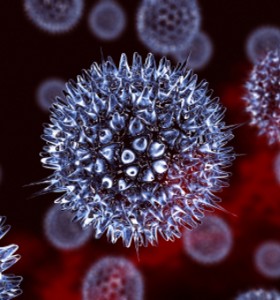 Viruses are not cells and cell structure, unlike bacteria, parasites, people and anything that is sure to take live. Note that life is first and viruses - the other. In fact, the majority of scientists consider viruses as a matter of the boundary between the living and the undead.
Viruses are not cells and cell structure, unlike bacteria, parasites, people and anything that is sure to take live. Note that life is first and viruses - the other. In fact, the majority of scientists consider viruses as a matter of the boundary between the living and the undead.
How is this possible? Is not that a mistake?
As is well known, living matter has the following immutable characteristics - ability to self-organize and self-reproduction. For this purpose, each living cell and in every living organism vital processes occur - feeding, respiration, excretion, etc., so to speak, keep cells and organisms alive. In viruses, however, things are very different.
Generally, viruses are particles (but not cells!), Representing a small amount of DNA or RNA wrapped in a protein, fewer carbohydrates and / or lipids (fatty substances). Proteins on the surface of the viral envelope, which can have various forms, recognize and provide host cell of virus in it. When the virus enters the cell, its DNA is integrated in this cell that it "forces" to form virus particles assemble spontaneously and leave the cell.
Viral just like living organisms, there are self-organization processes and reproduction. They, however, they are performed only in the host cell, and all other vital processes are absent altogether. By entering into the cell, viruses (which, incidentally, outside the cell are called virions) are completely dead particles. Only when entering it, they show some properties of living matter - samoorganizarane and reproduction. However, these qualities are not considered sufficient virus to be identified as living matter. For life is inherently inherent nutrition, respiration, excretion, etc. or summary speaking to a constant metabolism. Indeed, some organisms may greatly slow it down, but no body can stop it completely, and so called life.
Viruses do not have their own structures to carry out metabolism, and harness resources and structures of the host cell to carry out its goals. Therefore, they can not be called living. Apparently, however, they are not dead matter, since if it gets into the cell organization and show a high capacity for self-reproduction - something completely alien to the undead.
An interesting question is how the virus originated. It is believed that early in the evolution of the first primitive cells, viruses were parts of cells that are separate and distinct self-replicating particles. This theory is supported by the astonishing ease with which viruses penetrate into the cell and then subject yourself - it is placed entirely at their disposal, accepting them as part of ourselves.